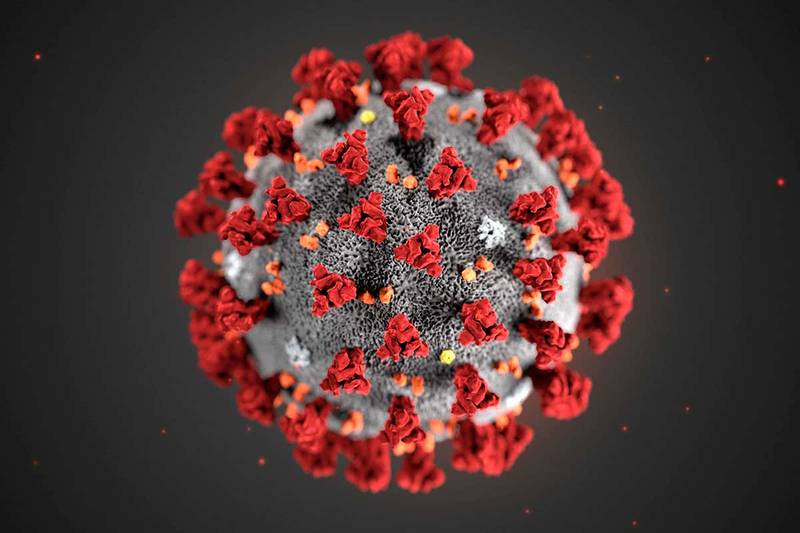An epidemic is a disease that spreads rapidly among many people in a community at the same time. A pandemic is an outbreak of global proportions. It happens when a novel virus emerges among humans – it causes serious illness and is easily human transmissible (spreads easily from person-to-person). The word pandemic comes from the Greek pandemos meaning “pertaining to all people”. The Greek word pan means “all” and the Greek word demos means “people”.
A pandemic covers a much wider geographical area, often worldwide.
A pandemic also infects many more people than an epidemic. An epidemic is specific to one city, region or country, while a pandemic goes much further than national borders. A pandemic is usually caused by a new virus strain or subtype – a virus humans either have no immunity against, or very little immunity. If immunity is low or non-existent the virus is much more likely to spread around the world if it becomes easily human transmissible. Pandemics generally cause much higher numbers of deaths than epidemics.
The social disruption, economic loss, and general hardship caused by a pandemic are much higher than what an epidemic can cause. An epidemic is when the number of people who become infected rises well beyond what is expected within a country or a part of a country. When the infection takes place in several countries at the same time it then starts turning into a pandemic.
A pandemic is an outbreak of global proportions. It happens when infection due to a bacterium or virus becomes capable of spreading widely and rapidly. Pandemics are large-scale outbreaks of infectious disease that can greatly increase morbidity and mortality over a wide geographic area and cause significant economic, social, and political disruption. Evidence suggests that the likelihood of pandemics has increased over the past century because of increased global travel and integration, urbanization, changes in land use, and greater exploitation of the natural environment.
These trends likely will continue and will intensify. Significant policy attention has focused on the need to identify and limit emerging outbreaks that might lead to pandemics and to expand and sustain investment to build preparedness and health capacity. An epidemic is defined as “the occurrence in a community or region of cases of an illness, clearly in excess of normal expectancy”. A pandemic is defined as “an epidemic occurring over a very wide area, crossing international boundaries, and usually affecting a large number of people”. Pandemics are, therefore, identified by their geographic scale rather than the severity of illness.
Viruses are constantly mutating. Those that trigger pandemics have enough novelty that the human immune system does not quickly recognize them as dangerous invaders. They force the body to create a brand-new defense, involving new antibodies and other immune system components that can react to and attack the foe. Large numbers of people get sick in the short term, and social factors such as crowding and the unavailability of medicine can drive those numbers even higher. Ultimately, in most cases, antibodies developed by the immune system to fight off the invader linger in enough of the affected population to confer longer-term immunity and limit person-to-person viral transmission. But that can take several years, and before it happens, havoc reigns.
Risks
• Pandemic risk is driven by the combined effects of spark risk (where a pandemic is likely to arise) and spread risk (how likely it is to diffuse broadly through human populations).
• Probabilistic modeling and analytical tools such as exceedance probability (EP) curves are valuable for assessing pandemic risk and estimating the potential burden of pandemics.
• Pandemics have occurred throughout history and appear to be increasing in frequency, particularly because of the increasing emergence of viral disease from animals.
• Some geographic regions with high spark risk, including Central and West Africa, lag behind the rest of the globe in pandemic preparedness.
• Influenza is the most likely pathogen to cause a severe pandemic. EP analysis indicates that in any given year, a 1 percent probability exists of an influenza pandemic that causes nearly 6 million pneumonia and influenza deaths or more globally.
• Public health infrastructure capable of identifying, tracing, managing, and treating cases
• Adequate physical and communications infrastructure to channel information and resources
• Fundamental bureaucratic and public management capacities
• Capacity to mobilize financial resources to pay for disease response and weather the economic shock of the outbreak
• Ability to undertake effective risk communications.

Impacts
• Pandemics can cause economic damage through multiple channels, including short-term fiscal shocks and longer-term negative shocks to economic growth.
• Some pandemic mitigation measures can cause significant social and economic disruption.
• Pandemics can cause significant, widespread increases in morbidity and mortality and have disproportionately higher mortality impacts on LMICs.
• In countries with weak institutions and legacies of political instability, pandemics can increase political stresses and tensions. In these contexts, outbreak response measures such as quarantines have sparked violence and tension between states and citizens.
• Individual behavioral changes, such as fear-induced aversion to workplaces and other public gathering places, are a primary cause of negative shocks to economic growth during pandemics.
Mitigation
• The most cost-effective strategies for increasing pandemic preparedness, especially in resource-constrained settings, consist of investing to strengthen core public health infrastructure, including water and sanitation systems; increasing situational awareness; and rapidly extinguishing sparks that could lead to pandemics.
• Successful contingency planning and response require surge capacity—the ability to scale up the delivery of health interventions proportionately for the severity of the event, the pathogen, and the population at risk.
• Risk transfer mechanisms, such as risk pooling and sovereign-level catastrophe insurance, provide a viable option for managing pandemic risk.
• Pathogens with pandemic potential vary widely in the resources, capacities, and strategies required for mitigation. However, there are also common prerequisites for effective preparedness and response.
• Once a pandemic has started, a coordinated response should be implemented focusing on maintenance of situational awareness, public health messaging, reduction of transmission, and care for and treatment of the ill.
• For many poorly prepared countries, surge capacity likely will be delivered by foreign aid providers. This is a tenable strategy during localized outbreaks, but global surge capacity has limits that likely will be reached during a full-scale global pandemic as higher-capacity states focus on their own populations.
Phases
The WHO have a six-phase program for identifying potential flu pandemics:
• Phase 1: No local health authorities have reported that an influenza virus circulating among animals can cause disease in humans.
• Phase 2: An animal influenza virus circulating in domesticated or wild animals has caused infection in humans. The WHO consider this a potential pandemic threat.
• Phase 3: An animal or human-animal influenza virus has caused disease in small clusters of people. However, it has not resulted in human-to-human transmission that is rapid enough to sustain community-level outbreaks.
• Phase 4: The WHO verify that human-to-human transmission of an animal or human-animal influenza virus is now able to sustain community-level outbreaks.
• Phase 5: The same virus has caused sustained community-level outbreaks in two or more countries within a single WHO region.
• Phase 6: In addition to the phase 5 criteria, the same virus has caused sustained community-level outbreaks in at least one other country in a different WHO region.
o Post-peak period: Levels of pandemic influenza in most countries with adequate surveillance have dropped below peak levels.
o Post-pandemic period: Levels of influenza activity have returned to the usual levels of seasonal influenza in most countries with adequate surveillance.
According to these definitions, the COVID-19 pandemic is currently in phase 6.
Preparing for a pandemic is challenging because of a multitude of factors, many of which are unique among natural disasters. Pandemics are rare events, and the risk of occurrence is influenced by anthropogenic changes in the natural environment. In addition, accountability for preparedness is diffuse, and many of the countries at greatest risk have the most limited capacity to manage and mitigate pandemic risk.
Authored by-

Ms. Anusha Pathak – Management Trainee- TVC

